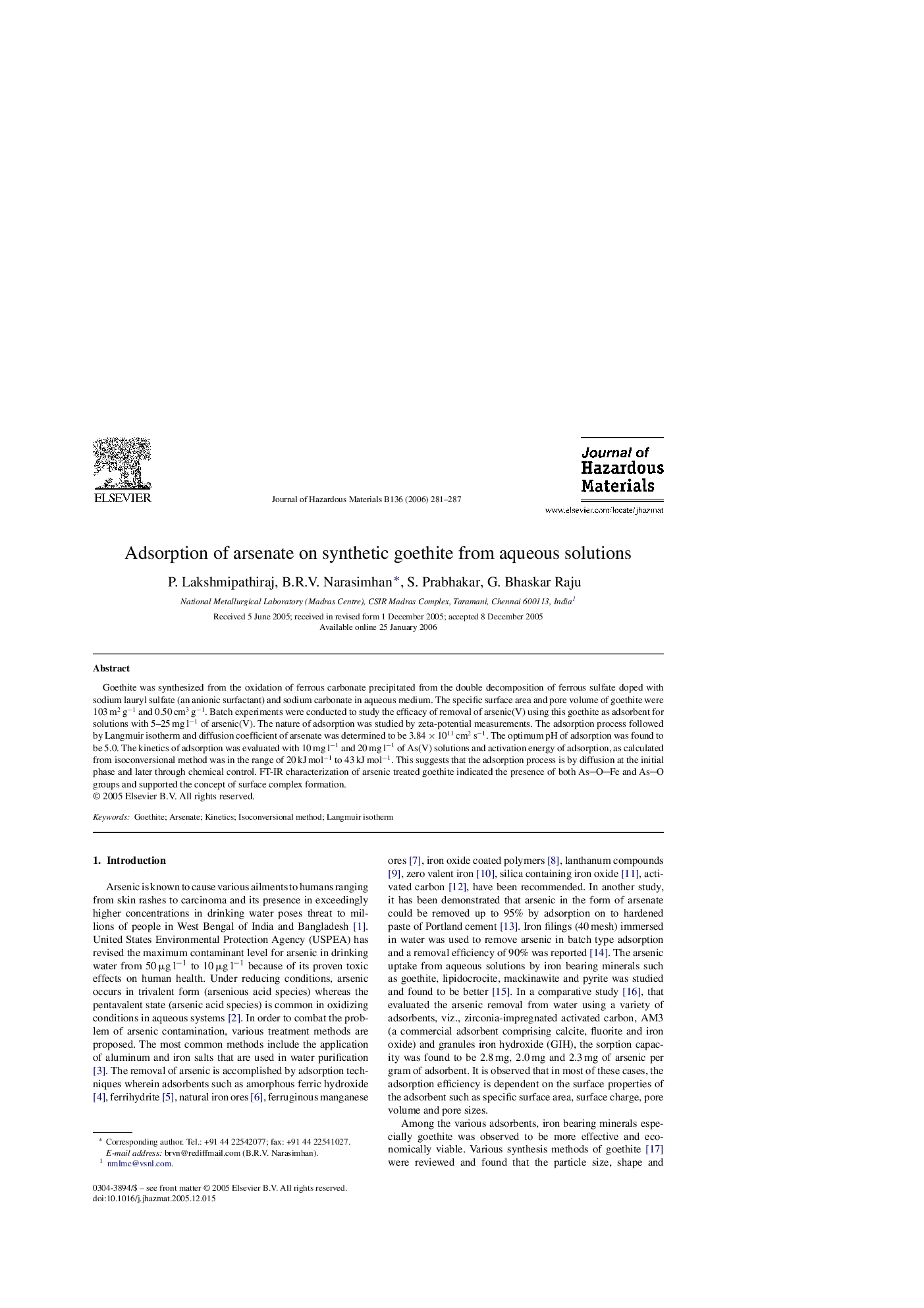| Article ID | Journal | Published Year | Pages | File Type |
|---|---|---|---|---|
| 585535 | Journal of Hazardous Materials | 2006 | 7 Pages |
Goethite was synthesized from the oxidation of ferrous carbonate precipitated from the double decomposition of ferrous sulfate doped with sodium lauryl sulfate (an anionic surfactant) and sodium carbonate in aqueous medium. The specific surface area and pore volume of goethite were 103 m2 g−1 and 0.50 cm3 g−1. Batch experiments were conducted to study the efficacy of removal of arsenic(V) using this goethite as adsorbent for solutions with 5–25 mg l−1 of arsenic(V). The nature of adsorption was studied by zeta-potential measurements. The adsorption process followed by Langmuir isotherm and diffusion coefficient of arsenate was determined to be 3.84 × 1011 cm2 s−1. The optimum pH of adsorption was found to be 5.0. The kinetics of adsorption was evaluated with 10 mg l−1 and 20 mg l−1 of As(V) solutions and activation energy of adsorption, as calculated from isoconversional method was in the range of 20 kJ mol−1 to 43 kJ mol−1. This suggests that the adsorption process is by diffusion at the initial phase and later through chemical control. FT-IR characterization of arsenic treated goethite indicated the presence of both AsOFe and AsO groups and supported the concept of surface complex formation.
